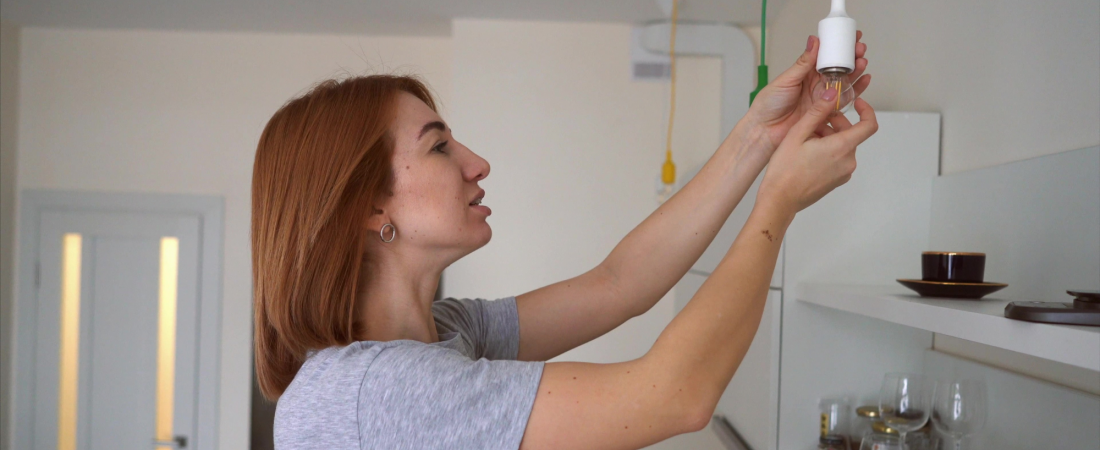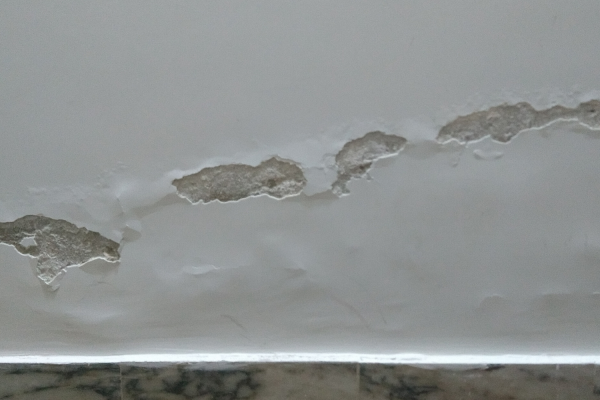When you hand over the keys to your new tenant, everything in your rental property will be in safe and sound working order. It’s only natural that over the course of the coming months and years, even the most careful tenants will cause some wear and tear – and the odd thing might go wrong.
With that in mind, you and your tenant need to know who is responsible for what from the outset. Getting such things nailed down from the beginning, in your tenancy agreement, is essential, so there can be no room for any confusion. Basically, if you remember only this general line you won’t be too far wrong: the landlord is responsible for repairs and replacements, and the tenant is responsible for maintaining the property and furnishings.
Of course, there will be some exceptions to this, such as if the tenant wilfully or negligently damages something. A tenant’s responsibility for repair can be something of a grey area, but thankfully the British courts have case law that defines it rather well. In the end, it boils down to your tenant acting in a ‘tenant-like manner’.
Acting in a ‘Tenant-Like Manner’
It may have been way back in 1953, but the direction passed down by Lord Denning in the case of Warren v Keen is often quoted today. While some of the duties, like emptying the boiler and cleaning the chimneys, are now outdated (unless your tenant has a working natural fire), the principle holds true. Lord Denning said:
“The tenant must take proper care of the premises. He must, if he is going away for the winter, turn off the water and empty the boiler; he must clean the chimneys when necessary and also the windows; he must mend the electric light when it fuses; he must unstop the sink when it is blocked by his waste. In short, he must do the little jobs around the place which a reasonable tenant would do. In addition, he must not, of course, damage the house wilfully or negligently… but apart from such things, if the house falls into disrepair through fair wear and tear or lapse of time or for any reason not caused by him, the tenant is not liable to repair it.”
Tenant-like manner, then, describes your tenant as being expected to respect the property and maintain it in a fair and proper fashion.
Modern Examples of Tenant-Like Maintenance
Just what you might like to specify in your tenancy agreement rather depends on what services or appliance your rental includes. But for many landlords, these are the critical areas of duty for the tenant:
- Not blocking sinks, and unblocking them if required
- Changing lightbulbs and fuses for lights or plugs of provided furnishings and appliances
- Using correct dishwasher products, including monitoring limescale build-up
- Keeping the interior and exterior clean, including windows
- Bleeding radiators and repressurising the boiler if and when needed
- Replacing batteries in smoke and carbon monoxide detectors
- Keeping windows condensation-free
- Ensuring the property remains pest-free
- Undergoing general garden maintenance, including lawn mowing and sweeping leaves
- Keeping the property secure
You might better describe these as all the “small jobs” any householder undertakes themselves. Generally speaking, if the tenant needs to pay a professional to come in, then that would usually be to carry out work the landlord is responsible for arranging.
What is the Difference Between Damage and Wear and Tear?
Common sense will tell you that over time, there will be natural wear and tear to furniture, fixtures and fittings in your property, just as there is in your own home. This wear and tear is caused by tenants using the property and furnishings in a normal manner. Your tenants cannot be responsible for it. Only when they do damage are they responsible for paying for repair or replacement.
Fair wear and tear
Fair wear and tear refers to the natural decline you would expect to see over time, such as minor scuffs and scrapes on the walls or kitchen work surfaces, when tenants use the property and furnishings for their intended purposes. Carpets, too, become worn over time and curtains may fade a little. These things are pretty much impossible to avoid, and the tenant is not, therefore, responsible.
During a longer tenancy, more wear and tear is expected to occur than over the course of a shorter tenancy. For tenancies that last many years, tenants might reasonably expect the landlord to redecorate, such as laying new carpets or providing new or reupholstered furniture, if the property and its furnishings have worn to a significant extent. The same principal is true for tenancies with multiple tenants versus single occupants; more tenants means more use and more wear and tear must be expected.
MyDeposits, one of England’s three deposit protection schemes, believes there is a consensus that the lifespan of most rental property furnishings is five years.
Damage
Damage that is deliberate, or results from improper use or negligence, and which affects the usual function of the property is considered to be the tenant’s responsibility. Such damage might include a smashed mirror, holes in the wall, broken door handles, pet damage to the flooring or broken toilet seats. Damage caused by visitors to the property is the responsibility of the tenant.
Tenants must report issues that require repair
Damage caused that is not due to the tenant, such as a leak from an upstairs property, is not the tenant’s responsibility, but they should report it to the landlord as soon as the issue is noticed so that remedial action can be taken to prevent the damage from continuing.
Sometimes tenants will put off reporting problems to their landlord because they fear eviction if they complain. It is in both parties interests to prevent this dynamic from arising. This can be done by keeping a good relationship and lines of communication with the tenant, as well as including the duty of the tenant to report repairs as soon as possible in the tenancy agreement.
What are Your Responsibilities as a Landlord?
While recording what the tenant’s responsibilities for repairs are, it’s equally important to know your own responsibilities. Here are the four key areas of landlord responsibility:
- Structure and exterior of the property, including walls, roof, foundations, drains, guttering and external pipes, windows and external doors
- Lavatories, baths, sinks and all associated pipework
- Water and gas pipes, electrical wiring, water tank, central heating (boiler and radiators), gas fires, fitted electric fires or heaters.
- Any furnishings supplied with the property, including white goods and furniture
For a full guide on the responsibilities of landlords, read our guide.
Returning the Property in its Original Condition at the End of a Tenancy
The tenant’s responsibilities for repairs and maintenance include returning the property in the same condition as when they moved in, minus wear and tear as described above. When you come to carry out the end-of-tenancy inspection, you should not find any nasty surprises.
If you did find damage which does not fall under normal wear and tear, then you must record this to the tenant. You or your agent took and held a deposit from the outset of the tenancy for this reason, and you can use these funds to undertake the necessary repair or replacement of damaged furnishings or structural items (e.g.flooring).
What you do not need is a dispute over whether a defect was caused by the tenant or had been there all along, meaning the tenant cannot be held responsible. This is why you must perform an inventory of all fixtures and fittings, the garden and general conditions, and share it with the tenant at the beginning of their rental term.
In the event anything looks out of place, you can both refer back to the inventory to determine who should be responsible. Without an inventory, it will be very difficult indeed to prove any damage was caused by the tenants.
Without an inventory, landlords will struggle to prove damage to the property occurred during the tenancy.
Order inventoryGood Communication with Tenants
Even though the rights and obligations of tenants and landlords are provided by statue, including them clearly in the tenancy agreement is a good idea. It means that everyone is clear about what they can expect from the other party and shows the tenant that you know and respect their rights, which will help you start off the tenancy on the right foot.
The great majority of tenants are responsible and see your property as their home. They will look after it, clean it and do general maintenance where necessary. In return, it’s only fair that you communicate well and that your tenancy agreement is very clear about repair and maintenance responsibilities.
Urge your tenants to report damage fast so that you can act to prevent a small problem becoming a large one. If you are fair, then they will be even better disposed towards looking after your property, helping to ensure you get maximum long-term return from your investment.




Exactly why I do not supply white goods or furnishings any more
A position that seems more sensible to me every day! So many problems caused by furnishings. If I ever let a property I think I’d do the same Colin.
The 10% wear and tear allowance was only for furnished properties. My experience is that most landlords don’t let furnished - they are actually better off under the new rules because there was technically no relief for replacement carpets and white goods for them under the old rules.
Bunging in a bit of furniture to call it furnished would not have cut it if you had had an enquiry.
A property would only be considered ’furnished’ and therefore eligible for wear and tear allowance if the property were capable of normal occupation without the tenant having to provide their own essential items of furniture.
To quote HMRC: “To qualify as a furnished residential letting the property had to be a dwelling house that was let with sufficient furniture, furnishings and equipment for normal residential use.” (https://www.gov.uk/hmrc-internal-manuals/property-income-manual/pim3215)
I understand exactly what you are saying hence I did not bung it in I placed it very carefully